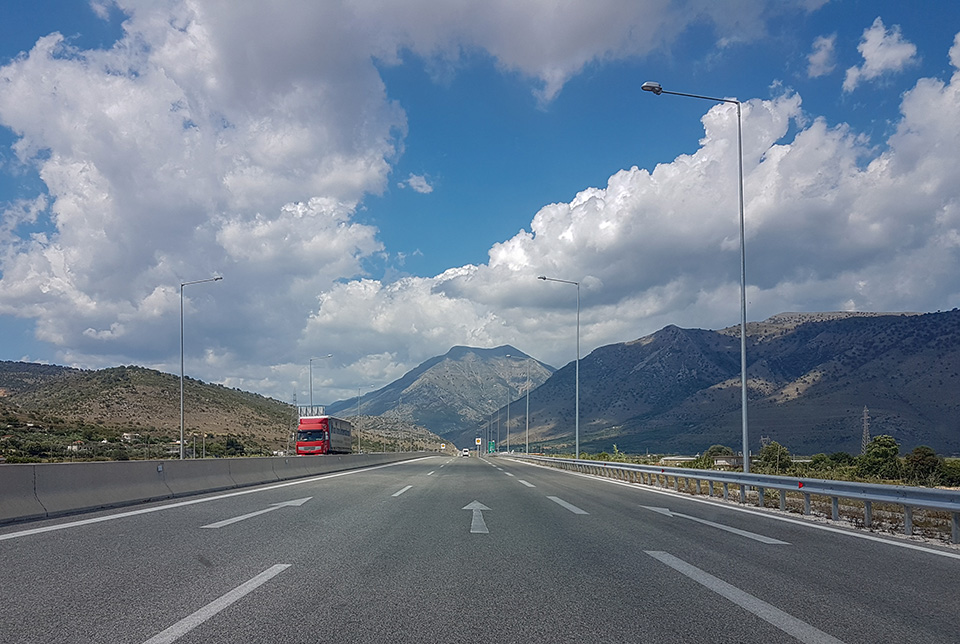“Dead 23-year-old man in a car road crash in Katerini”. “A 30-year-old driver dead and two injured in a car road crash in Mesogeion”. “Fatal road crash in Trikala with two young people killed”. These headlines were written only in the first days of April. These numbers were even more increased in March. At the same time that Greece was mourning the victims of the tragic crash in Tempe, families in different parts of the country were mourning their own children killed in road crashes. We have 57 fatalities every one and a half month in traffic crashes in Greece. But there, we do not have the same awareness, because we are the drivers ourselves who are blinded and continue to drive with this bad behaviour.
During the decade of the crisis, 2010-2020, Greece managed to dramatically reduce the number of road crashes. The reduction reached 54% and Greece had the best performance in the whole of Europe. However, our country still ranks among the Member States with the highest number of fatalities in the EU. Specifically, in 2021, Greece ranked sixth worst with 57 fatalities per million inhabitants.
Male drivers are six times more dangerous
According to the available studies, with the active contribution of NTUA, it turns out that the most dangerous drivers are male and young people. Male drivers, proportionally for the kilometres they drive in Greece, are six times more dangerous than female drivers. Internationally, they are four to five times more dangerous, this gender difference is mainly based on the perception of risk but also on male culture. Men take more risks, run faster and keep shorter distances than those in front of them, resulting in more and more serious crashes, as speed increases both the frequency and severity of crashes.
There is a need for demonstration and competition
Behind these characteristics is male’s intention to impress themselves and possibly others. It is a fact that is true in Greece and in Europe, and it is true throughout time. Although the rate is decreasing and the culture is constantly improving, it is not happening at the pace we would like. These behaviours are gradually becoming reprehensible by those around them and thus, fewer and fewer males are engaging in show-offs and high-risk behaviours. These are social norms. Especially for young males, the vehicle is a symbol of power, the good and fast vehicle, but also the great risk they can take. Females traditionally – I’m not saying whether it’s good or bad – don’t show their power by symbolizing speed and cars.
Motorcyclists are a separate category
Motorcyclists are a separate category of crash sources in Greece. The profile of motorcyclists in our country differs greatly from that in Europe, creating a national specificity.
A young motorcyclist is 40 times more likely to be involved in a crash than a middle-aged car driver. The statistics are inexorable. It is pointed out that in all EU countries, helmet use reaches 99%, while in Greece it is 79% for the driver and 46% for the passenger. Young people and men are also a large category of those who refuse to wear a helmet. Motorcyclist fatalities account for 17-18% of road fatalities in Europe. This figure is double in Greece and reaches 36%.
Good driver after 10.000km
Finally, the danger posed by the inexperience of young drivers is being examined. Citing the literature, a driver becomes good after 10.000 km, in the first thousand kilometres the driver has a high chance of making a mistake. Scientists and various countries, such as the Scandinavian countries, France and Germany, know this. They are therefore trying to reduce this potential source of crashes by imposing various measures, such as the compulsory presence of a co-driver for the first 5.000 kilometres, a ban on driving a long distance from the area of residence or at dangerous times of the day, such as Saturday night.
Theory of the safe system
In Greece the biggest problem behind traffic crashes is the behaviour and not the infrastructure.
Interview to Kathimerini.gr in April 2023

